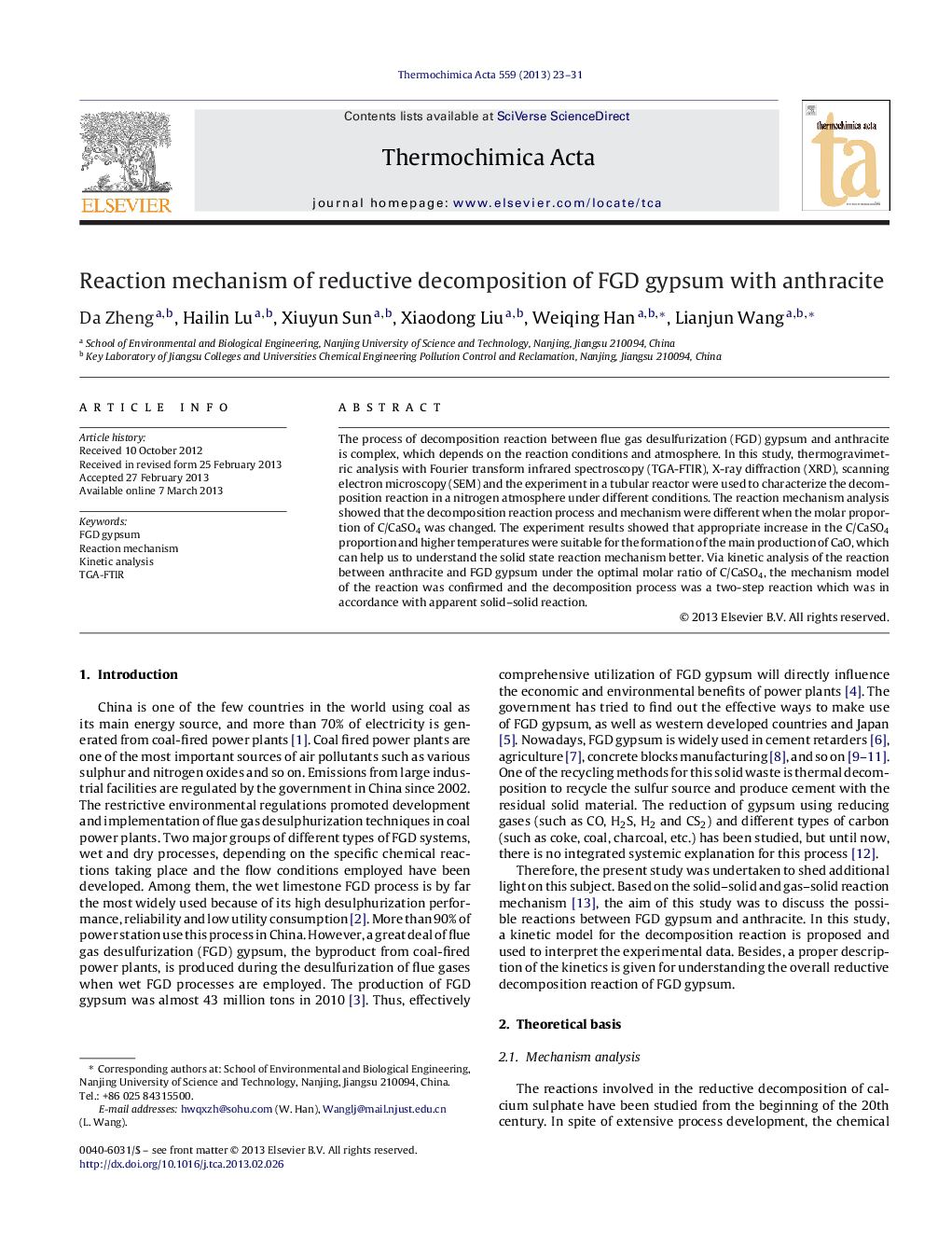| Article ID | Journal | Published Year | Pages | File Type |
|---|---|---|---|---|
| 673847 | Thermochimica Acta | 2013 | 9 Pages |
Abstract
The process of decomposition reaction between flue gas desulfurization (FGD) gypsum and anthracite is complex, which depends on the reaction conditions and atmosphere. In this study, thermogravimetric analysis with Fourier transform infrared spectroscopy (TGA-FTIR), X-ray diffraction (XRD), scanning electron microscopy (SEM) and the experiment in a tubular reactor were used to characterize the decomposition reaction in a nitrogen atmosphere under different conditions. The reaction mechanism analysis showed that the decomposition reaction process and mechanism were different when the molar proportion of C/CaSO4 was changed. The experiment results showed that appropriate increase in the C/CaSO4 proportion and higher temperatures were suitable for the formation of the main production of CaO, which can help us to understand the solid state reaction mechanism better. Via kinetic analysis of the reaction between anthracite and FGD gypsum under the optimal molar ratio of C/CaSO4, the mechanism model of the reaction was confirmed and the decomposition process was a two-step reaction which was in accordance with apparent solid-solid reaction.
Related Topics
Physical Sciences and Engineering
Chemical Engineering
Fluid Flow and Transfer Processes
Authors
Da Zheng, Hailin Lu, Xiuyun Sun, Xiaodong Liu, Weiqing Han, Lianjun Wang,
